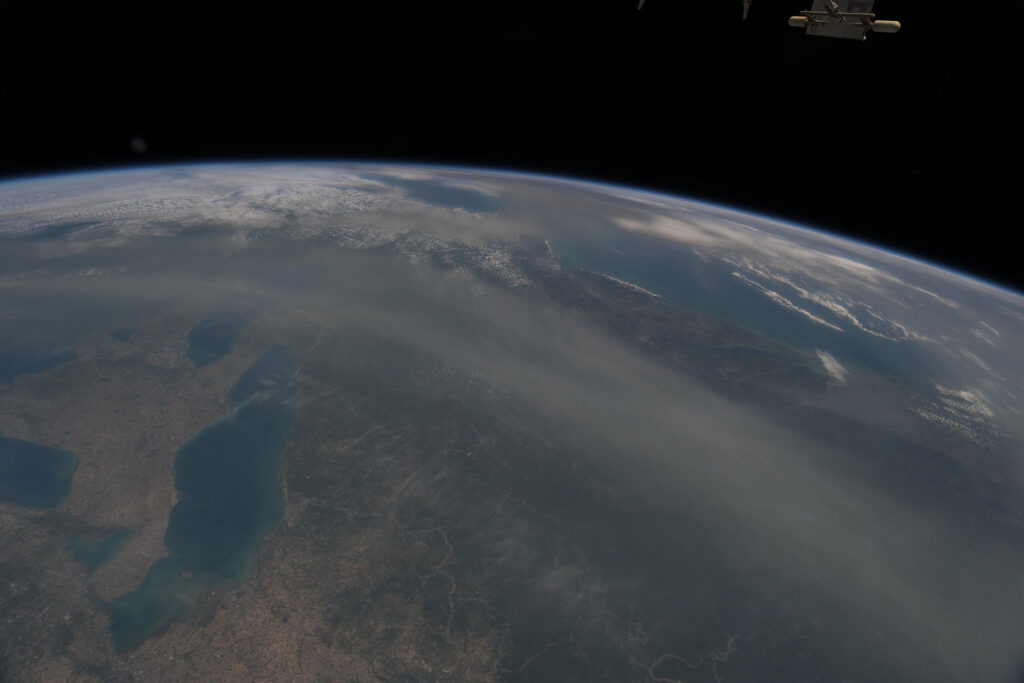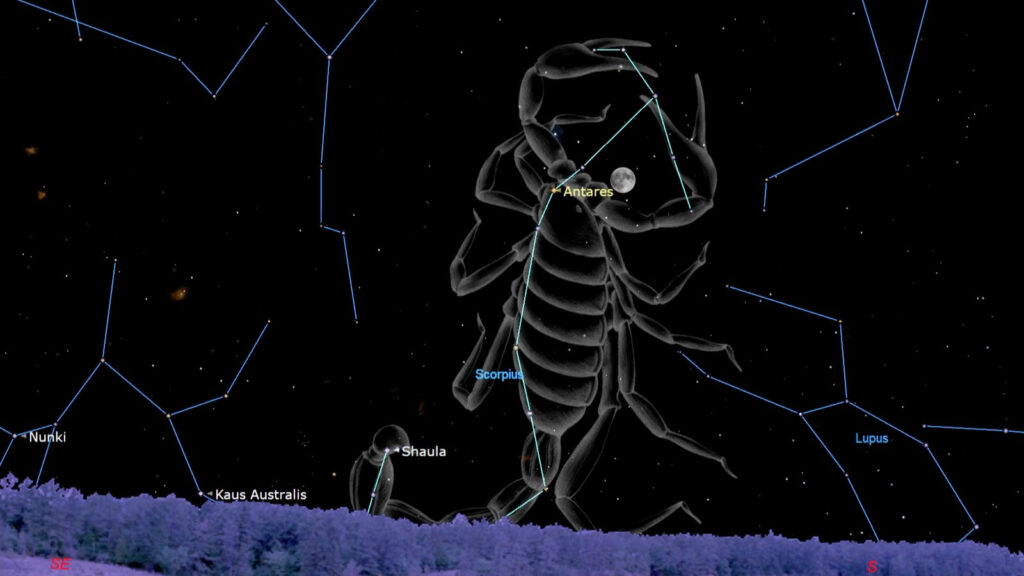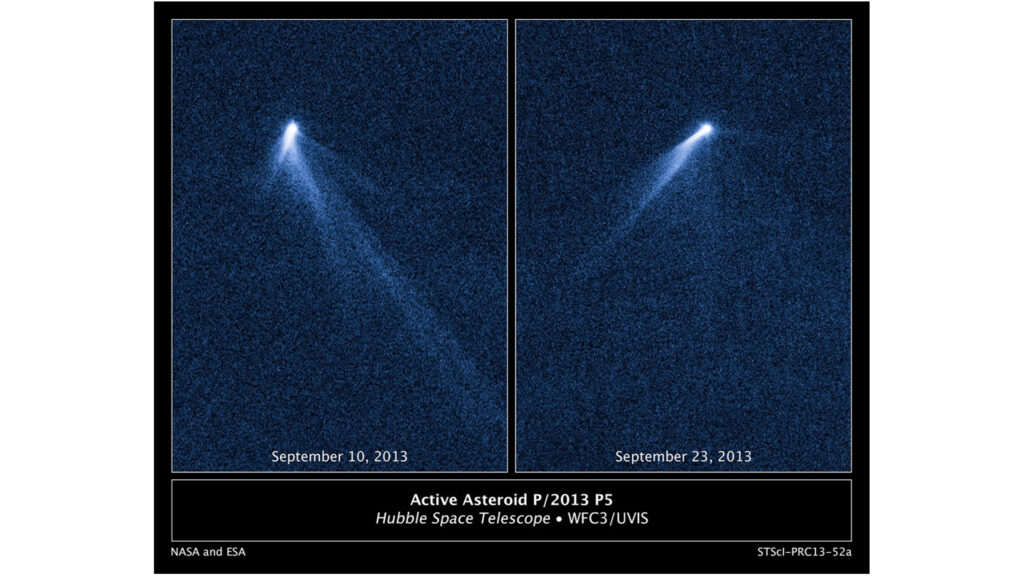About a year ago, Latif Nasser was having a pretty ordinary evening. The day was done, the sun had set, and he was standing in front of his two-year-old son’s crib, tucking him in. It was the same room he’d visited tons of times before, performing the same duties, looking at the same wall decorated with the same solar system poster he’d seen from the same … wait. What was that?
For the first time, Nasser did a double take of the artfully illustrated poster. And, for the first time, he noticed something strange. This unassuming diagram indicated Venus has a moon — a moon named Zoozve?
With a Ph.D. from Harvard’s History of Science department, as co-host of the iconic science podcast Radiolab and as executive producer of the science documentary series Connected, Nasser was perplexed. Why had he never heard of Zoozve? How could there be such a weirdly named moon that no one ever discussed? Still, he shrugged it off. Perhaps the solar system had some corners he simply didn’t know about. Perhaps Venus, the planet he thought lived alone, just has a lovely, whimsical moon.
Wrong.
After putting his son to bed, Nasser went online. “Venus has no moons,” a NASA page clearly stated. This obviously has to be some sort of prank, he thought. The rest of the poster had all of the “normal” solar system marvels he was used to. It had Mars’ pudgy little potato moons, Deimos and Phobos, and Mercury was a moonless baby orb as expected. Only Zoozve stood out. “But I was like, ‘Okay, I want to be in on the joke.'” Nasser told Space.com. “This name was so strange, and it felt purposeful — like, that’s not an accident.”
Related: Photographer snaps extremely rare ‘green flash’ coming from Venus

The truth about Zoozve
“My first step actually, after Googling, was to talk to my friend Liz,” Nasser said.
As NASA’s Senior Communications Specialist, Liz Landau was Nasser’s primary lead toward decoding the truth about Zoozve. But, well, in short, she had never heard of Zoozve either. Oh, and that NASA page about Venus? It was indeed correct, she confirmed. “She was completely clueless,” Nasser said. But Landau was in on it now. She was the newest member of the Zoozve-hunting club.
Near the end of their conversation, Nassar recalls her saying that, if anyone knows, it’s probably someone who works in her building. Someone at NASA must have heard of Zoozve, right?
Right?
“I’ll find them,” she said.
So, with Landau following that trail, Nasser decided to dedicate himself to his own footsteps. He went back to the scene and inspected the poster. Who was behind this? Unfortunately, the illustrator — who he would soon come to learn is the artist Alex Foster — had sort of haphazardly signed his name. It took a lot of thinking and a short stint of reverse Google Image Search-ing to find him at last.
“I was just like, ‘I’m from Radiolab, and I really would love to talk to you, and I would love to not tell you what it’s about until we’re in the studio,'” Nasser explained. “Then I told him, and I think he was a little jarred. He really did not see it coming.”
Would Nasser finally get an explanation as to why no one at Harvard ever told him about Zoozve? Nope. Foster didn’t have an answer. Apparently, he’d just gotten a list of all our solar system’s moons online somewhere, then used that list to create a cool poster. He didn’t really think about it again. Well, not exactly. But we’ll get to that.
Meanwhile, Landau had been cooking up a hypothesis. That’s actually an understatement. She had fully figured it out. “She just says, ‘I was looking at it, and then I went away and then I looked at it again,'” Nasser remembers.
That poster didn’t say Zoozve, she realized. Those weren’t Z’s. That wasn’t even a moon.
One ordinary day, while taking care of his son, Nasser in reality caught sight of a funny detail on a nearby solar system poster named not Zoozve but rather “2002VE” — a quasi-moon of Venus that was discovered in its namesake year. The first quasi-moon ever found, in fact.
And now, a drum roll please.

On Feb. 5, Radiolab announced that 2002VE has officially been named 524522 Zoozve by the International Astronomical Union — the result of an epic effort led by Nasser, his team at Radiolab as well as a cadre of other main characters in the rest of the Zoozve story we’ll soon discuss. So, yeah, there’s a moon out there named by product of human error. It joins a solid bundle of other hot-off-the-press astronomical objects including 28890 Gabaldon, named for the great-granddaughter of Stanley Sykes who worked on the telescope used to discover Pluto, and 620096 Curupira, named for a Brazilian indigenous folklore legendary creature in charge of protecting forests.
I think the joy scientists seem to get from adding distinct, often personal, names to their discoveries says something about our intrinsic human desire to feel connected — even to the things that are hardest to connect to. Or rather, maybe especially to those things.
David Peterson, the linguist who invented the Dothraki and Valyrian languages for HBO’s Game of Thrones series, once said that perhaps we like naming things particularly if we know someone’s going to hear the name. When Nasser first mentioned his Zoozve dilemma to the internet, it connected people across vast regions. It felt nice to call a forgotten space rock by a serendipitous, silly name. Naming something means that thing is important enough to name.
“It just felt right,” Nasser said. “It feels like this weirdo, first-of-its-kind thing getting this weirdo name.”
Zooz-vee is my preferred way to say it, but Nasser’s a fan of Zooz-vay. One of my colleagues is a fan of Jeuj-vey, as in “zhuzh.” But however you’ve been saying it in your mind for the past few minutes works, too. “All pronunciations are welcome,” Nasser said. “This is like, this is a made up thing. Everyone’s welcome to the party.”

The weirdo moon party
Quasi-moons are pretty cool objects in the solar system, as Nasser emphasizes in the Radiolab episode that lays out the whole Zoozve saga with a deeply entertaining cast.
These astronomical objects are considered moons because their orbits are dictated, to some degree, by a nearby planet’s gravitational pull. However, they’re not exactly moons because they don’t only orbit that planet — they orbit more than one object. This is unlike our moon, for instance, which only orbits the Earth (yes, it technically orbits the sun as well, but its primary anchor is the Earth.)
Plus, 2002VE — or rather, 2002VE86 to be specific — is actually only one of several quasi-moons we know about in the solar system.
Even Earth has some, and in 2021, scientists suggested that one of them, named Kamo’oalewa might even be a piece of our actual moon that broke off at some point. Scientists located a quasi-moon near us last year as well, orbiting in sync with our planet’s trajectory around the sun.
Yet, an unanswered question remains: Why did Foster decide to include only Venus’ quasi-moon on his poster?
One theory is that the solar system list he’d referred to while designing the scene was created shortly after Zoozve was discovered. Later, perhaps Zoozve was removed from the list because its original creator realized it was officially dubbed a quasi-moon. This is pure speculation, though. Nasser is yet to find a reason.
However, what did reveal itself is that while clearing up the Zoozve conundrum, Foster realized he’d actually thought about this quasi-moon image once before! Some time ago, he recalls, another father who bought this poster had called him to ask about Zoozve. What’s even more surprising is that this father ended up figuring it out on his own, then dropped the topic, per an email thread.
“That dad figured it out, like, in 10 seconds,” Nasser remarked.

Zoozve crew-zve
During the year-long, rollercoaster-ride journey toward christening Zoozve, Nasser had contacted many of the scientists to whom this quasi-moon owes its fame. Foremost, Brian Skiff, a research scientist at Lowell Observatory in Arizona who has studied hundreds of asteroids over the past 15 years is the one who found Zoozve in the first place. Yet, when approached, Nasser says Zoozve didn’t ring a bell for Skiff because of the staggering amount of objects he’d dealt with over the years.
“I can’t even tell you how anticlimactic it was to be like, ‘I found the discoverer, oh my god, we’re gonna we’re gonna talk to him, he’s gonna have all the answers,” Nasser said. “And he was like, ‘I have no idea what you’re talking about. Like, I don’t remember this at all.'”
In fact, this is part of why Radiolab was able to petition for Zoozve to be named Zoozve to begin with. Because Skiff didn’t decide to name Zoozve himself, it was given an automatic name — which ended up being 2002VE86. Only after a newly discovered object has a solid amount of accolades (aka, research papers written about it) does it get to have its own special name.
Thankfully, the book of Zoozve was written by two scientists who continued studying the strange object after Skiff tossed it aside for more pressing space rock muses. These Zoozveheads are named Seppo Mikkola and Paul Wiegert.
Wiegart, Nasser says, is who helped him fall in love with Zoozve by emphasizing how these small enigmas can have very big, and very beautiful, meanings. Mikkola added the drama.

Nasser recalls a story Mikkola relayed while discussing how unique it is that Zoozve won’t be staying in Venus’ grip forever. According to Mikkola’s calculations, the object actually used to be in Earth’s vicinity, and will eventually be flung to another area of space currently unknown, while following a totally unpredictable trajectory. “The metaphor of it sort of just clicked,” Nasser said, considering how Zoozve’s life parallels his own detective work.
“He was like, ‘In my town one day, I was at a restaurant or a bar and there was this guy, and he’d been drinking heavily for like a week,” Nasser said. “‘And this guy just came at me with a knife, like, for no reason.”
The story goes on about how this alarming event eventually came to an end. Everyone was fine. Then, a week later, Mikkola was strolling down the street. While walking, he saw the guy with the knife. “He didn’t remember that he tried to kill Seppo,” Nasser said. “And Seppo was like, ‘Oh, hi.'”
The moral of this story? “He was like, ‘Things are unpredictable. Things happen and maybe they’ll be a little bit dangerous and that’s okay.'”
Not so ordinary day
When it came time to submit the naming proposal to the International Astronomical Union — which entailed writing a highly succinct few sentences of a far longer version of this article — Nasser read his draft to Skiff. (A draft that, I might add, sounded incredibly impressive.)
“Sounds fine,” Skiff said frankly, then submitted the proposal on Oct. 12, 2023.
All that was left was to wait and see what the “The Executive Committee WG Small Bodies Nomenclature” board voted on. Nasser and Skiff didn’t have a great feeling. That was because the board puts forth quite a few rules about naming astronomical objects. For instance, a new guideline says all names should be rooted in mythology. It’s an understandably complex system; naming conventions in astronomy have recently been making headlines due to the inevitable business of an evolving society.
Scientists have been pushing for the renaming of controversially titled items such as The James Webb Space Telescope and The Large and Small Magellanic Clouds, for instance. The former, named for NASA’s Administrator between 1961 and 1968 who was in power during the Lavender Scare, ended up not being renamed; the latter two, named for explorer Ferdinand Magellan, are still up for debate. The IAU will have a say there, as well.
Related Stories:
“I would have bet against us. I thought that mythological name rule was a sort of an insurmountable hurdle,” Nasser said. Looking for some guidance, he asked Gareth V. Williams, the board’s secretary, what he thought would happen.
“He was like, ‘We just made that rule,'” Nasser said. “‘Why would we make exceptions to the rule that makes a mockery of the rule?'”
On that note, as a quick aside, because of its success with getting Zoozve named as such, the Radiolab team will soon be holding a contest in conjunction with the International Astronomical Union to name one of Earth’s quasi-moons. But, yes, this time, the mythological rule is probably going to remain strong. “We are still working out the details, including which quasi-moon we are going to be naming and how the naming is going to work,” the team says.
But returning to Zoozve’s hopeful proposal, the news came through about four months after submission. And, voila, here we are.
There’s a freshly minted moon out there named Zoozve.
According to Williams, the vote was probably swayed simply by how charming Nasser’s story was. “His sense was that the people who agreed to make an exception to this mythological rule, they were kind of moved by, in his words, the cuteness,” Nasser said.
And, upon hearing the result, Skiff, Zoozve’s very first human admirer, was thrilled. To celebrate, he went to Lowell — just for an ordinary evening looking at the stars, scouring for pieces of the cosmos that might’ve once been missed.
Foster, on the other hand, will likely be getting a Zoozve tattoo.


